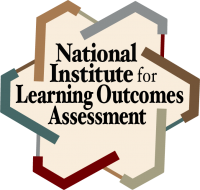Melissa Sydeman, WASC Accreditation Liaison Officer
Academy of Art University (AAU) is the largest regionally-accredited, private art and design school in the nation, offering undergraduate and graduate degree programs both on campus in San Francisco and online. AAU began engaging with the DQP in 2011. Our work product is a web-based exhibit of student work that documents how students in 8 different degree programs across a range of disciplines (including fine art, environmental design, product design, communication-based design and entertainment-driven design) meet the DQP outcomes. Sustained engagement with the DQP has generated agreement about degree-level outcomes that cross disciplinary boundaries, as well as transparent visual examples of how students demonstrate these outcomes.
Working with the original DQP language (which is purposefully abstract in order to apply to all disciplines) was a challenge for our faculty. To make the project more accessible, we worked with our faculty development department to translate the DQP into art- and design-friendly lingo. Here is an example (from DQP 1.0):
Original DQP Language
Specialized Knowledge
Initiates, assembles, arranges and reformulates ideas, concepts, designs and techniques in carrying out a project directed at a challenge in the field beyond conventional boundaries.
Art- & Design-Friendly Language
Problem Solving
Please share some recent thesis projects that show how your students developed original solutions to challenging problems in your field. Â In what ways did students draw on knowledge from other fields to come to their solutions?
The translation helped our faculty connect viscerally with the intent of the DQP.
Our faculty began the project by looking at actual examples of advanced student work and discussing how that work met the translated DQP outcomes. Some departments chose to display a range of student work addressing each DQP outcome, while others chose complex, summative projects that address many of the DQP skills. Department directors then worked with our Director of Assessment to map their program outcomes to the DQP and determine whether each skill was met by all or only some students in the program.
Centering our DQP project on an exhibit of student work resulted in findings that would not have been visible in outcomes lists alone. For example, we discovered some complex and rigorously-scaffolded assignments that consistently produce evidence of multiple DQP outcomes. We call these “super assignments.†The next stage of our DQP work will focus on excavating more “super assignments†and creating a taxonomy of best practices.
We are also using our DQP project to create a more integrated assessment of written communication and research skills, aligning the formative assessment in general education with the summative assessment in the major.
Engaging with the DQP has definitely benefitted our university. The DQP project has helped us talk about the range and depth of skills (not just aesthetic and technical, but also analytical and interdisciplinary) necessary to become a professional artist or designer. The concrete examples of student achievement, tied to a shared set of degree-level outcomes that is translatable to both industry expectations and other institutions of higher learning, can encourage robust and useful discussions with prospective and current students, parents, employers and accreditors.

